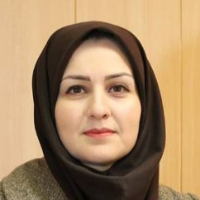A comparative study of the formative elements and components of the mosque by Focusing on the opinions of Henri Stierlin and Oleg Grabar
The study and investigation of Islamic architecture with different ways of thinking, including traditionalism, historicism, and phenomenology, shows the importance of the subject from the view of Western researchers. Each of these schools of thought, while there are similarities between them, tries to express the results of their studies on Islamic architecture from their perspective. Paying attention to the difference of opinions of these views, while there are commonalities, raises these questions: How have each of these methods defined Islamic architecture? How does the difference in their reading style in understanding Islamic architecture help to understand the subject? The present study, with a comparative study of two methods of phenomenology and historicism about Islamic architecture, focusing on the opinions of Henri Stierlin and Oleg Grabar, seeks to show how each of these two views has defined Islamic architecture, and what are their similarities and differences between them? From the perspective of phenomenologists, the works of Islamic art originate from a special world that is characterized by religious teachings; A world where monotheism, supernatural and divine worlds, and religious and spiritual concepts are among its most essential elements. Historicists think of Islamic art and architecture as a historical thing that is analyzed by examining the time of occurrence and the factors (social, political, etc.) before and after it, and present a worldly and non-mystical analysis of these works. Assuming that each of Henri Stierlin's phenomenological and Oleg Grabar's historicism approaches provides a different definition of the relationship between Islam and architecture, the findings of the research show that despite the fact that Grabar pays attention to the Qur'an and the tradition of the Prophet and mentions Islam and its effects as a cultural component along with historical, political, regional ones, but from his point of view, Islamic art is an art that has nothing to do with the religion of Islam, and the relationship between Islam and art and architecture does not have a special meaning from a religious point of view. He avoids attributing symbolic religious meanings to Islamic architectural works, without relying on evidence, place and time, and only relying on theoretical discussion. While Stierlin tries to find the relationship between Islamic works and eternal truths with a meta-historical and semantic view. He considers Islamic art and architecture to be derived from the essence and teachings of Islam and considers the religious component to be the factor in the formation of the mosque building that most of its elements have a symbolic and eternal nature. Both researchers believe that Islamic art and architecture have been influenced by the elements of other civilizations. However, their disagreement is about how these elements accept the new meaning. Grabar considers the acceptance of a new meaning by being placed in a new context. While Stierlin considers the acceptance of a new meaning under the influence of Islamic religion and beliefs. The current research, using a descriptive-analytical method with a comparative approach, has studied formative elements and components of the mosque from the phenomenological point of view of Henri Stierlin and the historicism of Oleg Grabar.
- حق عضویت دریافتی صرف حمایت از نشریات عضو و نگهداری، تکمیل و توسعه مگیران میشود.
- پرداخت حق اشتراک و دانلود مقالات اجازه بازنشر آن در سایر رسانههای چاپی و دیجیتال را به کاربر نمیدهد.


